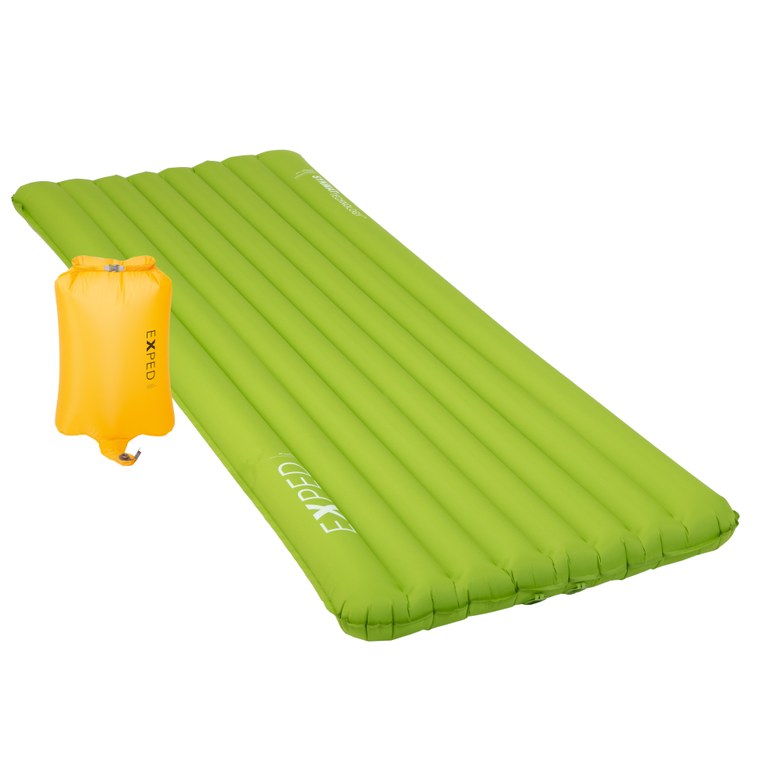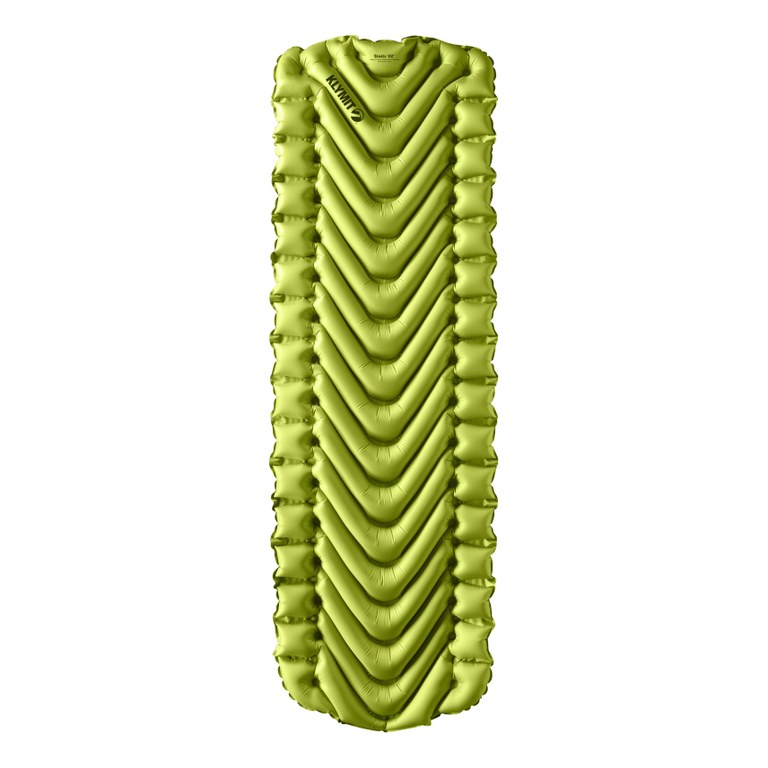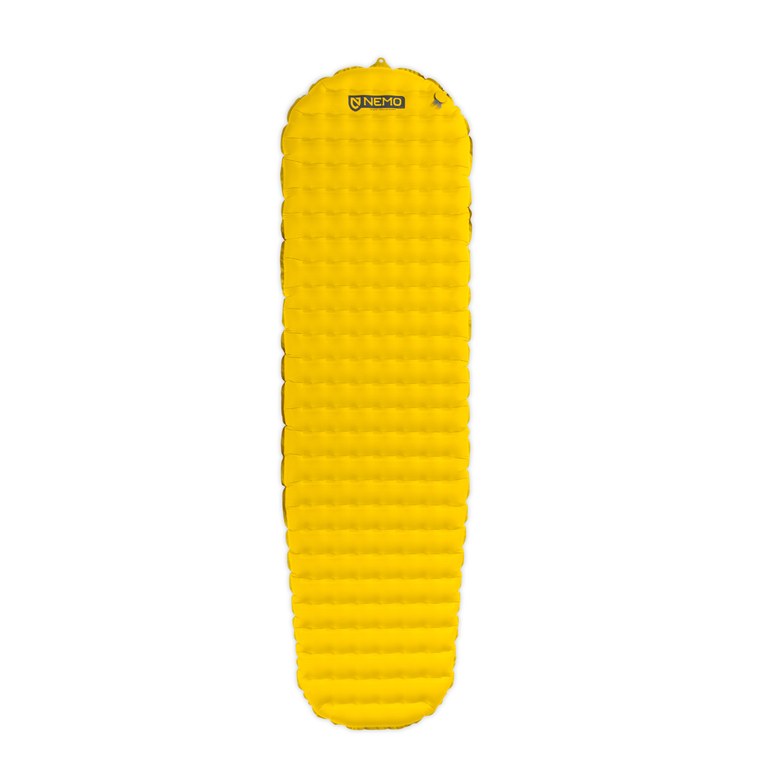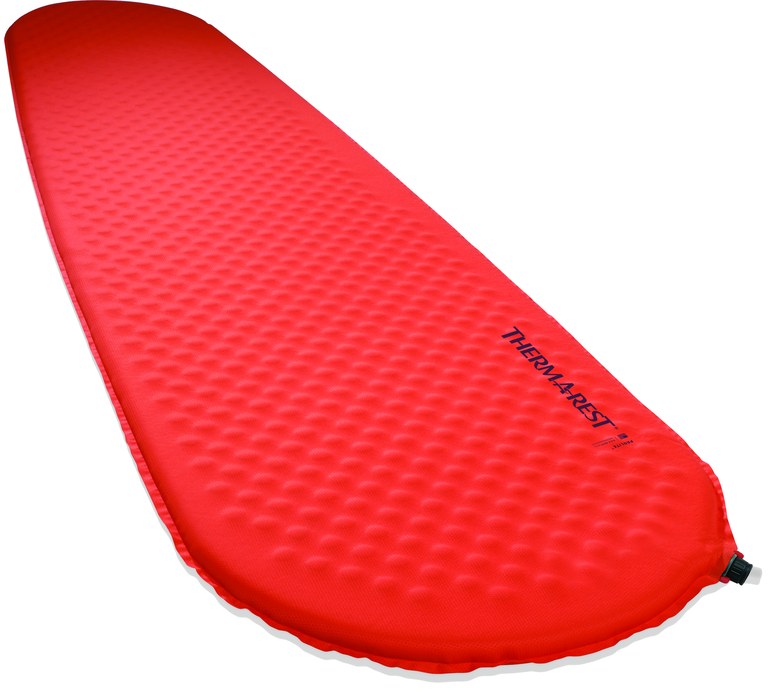Everything You Need to Know About Sleeping Pads
By Sandra Saathoff
After a great day of backpacking, you’re probably craving a great night of sleep. While the physical exertion of the day might help you drift off easily, tired muscles and joints appreciate a comfortable, warm surface. A good-quality sleeping pad is a key part of your sleep system, and having the right one for your body and the conditions can help you wake up feeling refreshed.
The purpose of a sleeping pad is straightforward — it provides a barrier between you and the ground. It increases your comfort, but it also provides insulation to prevent the ground from sucking the warmth from your body.
Sleeping pads come in a variety of styles, and the right one for you depends on what’s most important. (Weight? Comfort? Longevity?) The right pad will also depend on when you most commonly backpack — you can get away with less insulation in the summer. And the size and shape of your own body, as well as how you prefer to sleep, will help determine the pad for you.

If you’re sleeping somewhere cold, a pad with good insulation will help you have a more comfortable night. Photo courtesy MSR.
Closed cell vs. inflatable
Sleeping pads come in two basic options: You can either unfold them or inflate them.
Closed cell
The fold-out version, also known as closed cell, is made of closed cell foam of varying thicknesses — usually around half an inch. Foam pads are bulkier than their air counterparts and often need to be attached to the outside of your pack, though sometimes they can be used as the cushion inside a minimalist pack. Foam pads are generally less expensive and more durable than inflatable ones — you can’t puncture them and you can use them as a sit pad during the day. They also take almost no time to set up at camp. Some people combine a closed-cell pad with an inflatable pad, especially in cold weather for extra insulation from the ground. Weight for foam pads is generally at or under a pound. Price is in the $30 to $60 range for most options.
Inflatable
Inflatable pads are more comfortable to sleep on, as well as more packable, with most packing down to the size of a Nalgene bottle. The weight varies depending on insulation, size and other factors. Inflatable pads do require more care; you’ll need to pay attention to what surface they are placed on. A puncture in the field can ruin your sleep for the rest of your trip. Pads with baffles can occasionally fail at the seam, turning your well-designed bed into a balloon with a lump in one area. Packing a repair kit will help solve most issues, though generally, you need to be near a water source to find the leak. (You can submerge your pad and use the escaping bubbles to find where the leak is.)
Thickness: Options abound in the 2-to-4-inch range. Back or stomach sleepers or very small people (including some kids) may be fine with a thinner pad, while side sleepers or larger folks may prefer a thicker option.
Weight: Weight for inflatable pads ranges from an uberlight 6 ounces to about 2 pounds, depending on the features and size of the pad.
Cost: Price can be anywhere from $75 to $220.
TL;DR
Pads come in two main styles: closed cell and inflatable. Closed-cell pads are simpler and sturdier, but less comfortable. Inflatable pads are more comfortable, but they can develop leaks.
If you’re just starting, you probably will prefer an inflatable pad. If you need easy use and longevity, for instance for long trips, a closed-cell may work for you.
Pad size
There are two size considerations when you pick a pad: width and length. Part of this will be determined by your size and partly by how you sleep. If you have wide shoulders and sleep on your back, you may want a wider pad. If you’re small and sleep on your side, a narrow pad may be all you need. The length is based on your height, but also your preferences. If you’re looking to reduce weight or bulk, consider a shorter pad. Many backpackers place their backpacks under their lower legs; the pad will provide support from about the knees up. If weight is important, remember that generally speaking, the narrower and shorter the pad, the less it will weigh.
Comfort
There is nothing like lying on actual mats to discover if any style is best suited to your body. If you take a test drive at your local outdoor sports store, please consider purchasing there, too. If you need to buy online without trying a pad out first, check the return policy.
Nighttime trick
If you do choose an inflatable pad, you may notice that as you climb into your tent, it seems like your pad has deflated. This happens as the air cools at night, but if you add a breath of air right before bed, you should be good for the night.

When looking for a sleeping pad, consider sizing if you’ll need to fit them in a small tent. If you’re going to sleep under the stars, consider a light tarp or another protective layer under your pads. Photo by Derrick Peters.
R-value: What it is and why it matters
The bare earth sucks warmth from us. A sleeping pad protects us from that. R-value is the rating of a sleeping pad’s ability to keep you warm. Pads generally fall between ratings of 1 to 7. A lower R-value means that a pad provides less insulation against the cold, while a higher rating provides more. In summer in Washington, you can often get away with an R-value of 3 or lower, but if the nights are going to be colder, a value of 5 or higher will keep you warmer.
Inflation methods
Lungs: Most pads these days come with a multivalve that has an “in” option and an “out” option. This makes blowing up the pad using your breath much easier because you don’t have to worry about the air escaping when you take a breath. How many breaths it takes to fully inflate a pad depends on several factors: the individual pad design, how tired you are at the end of the day and the elevation where you are. If blowing up a pad using your breath sounds unpleasant, you may want to find a pad with another option.
Inflation sack: Available with some pads. This option allows you to wave a bag around, gathering air and then directing that air into your pad. One bonus of this method is that the sack can double as a pillow with a few clothing items stuffed inside.
Integrated pump: Some pads come with a hand pump built in. This adds weight, so you’ll need to decide if it’s worth it.
Self-inflation: This feature allows you to open the valve when you get to camp and let the pad suck in the air it needs. Along with ease of inflation, these pads offer the comfort of open-cell foam plus good insulation but they tend to be heavier and less compact than a basic inflatable pad.
Noise
While foam pads are generally very quiet, the lightest inflatable pads can be noisy, due to the layer of Mylar-like heat-reflecting insulation inside. If you do a lot of rolling over during the night, that sound may annoy your backpacking buddies. Some midweight pads are actually very quiet and if you share a tent or tend to sleep very close to other tents, it may be worth checking out the options in person before investing.
Slip-sliding away
Many popular inflatable pads are made of material that doesn’t provide a lot of friction. They can slide around a tent floor, which may mean you spend the night chasing your pad around or sliding right off it. One trick to encourage your pad to stay put is to put several diagonal rows of seam seal on both the bottom of the pad and the tent floor. When the seam seal stripes touch each other, they help stop the slide.

Finding the right sleeping pad depends a lot on your preferences and how you sleep. Photo courtesy Nemo.
Storage
When you’re back from the trail, your sleeping pad deserves a bit of love. A gentle wipe with water and a soft cloth will remove most accumulated dirt. It’s important to clean off any insect repellent immediately, as products with DEET can eat through plastics quickly. Once clean and dry, store the pad in a temperature- and humidity-controlled environment away from sunlight — like your closet. Foam pads can be stored rolled or folded. Inflatable pads should be stored with the valve open and pad hanging. Try not to fold the pad along the same creases each time, to prevent wear. Self-inflating pads should ideally be stored unrolled.
Fun stuff
Keeping pack weight down is all about having multipurpose items and your sleeping pad can easily become one of them. A permanent marker can turn a smooth pad into a game board for checkers or tic-tac-toe. Find a few small rocks or pinecones and you’re in business. Or use your inflatable pad (carefully) as a floatie in an alpine lake.
Reuse and rest easy
Once your sleeping pad is beyond use or you’ve decided to upgrade it, you don’t have to toss it in the trash. There are many potential uses for that old pad.
- Keep it around as a guest bed.
- Turn a foam pad into a pet bed.
- Add some straps and turn it into a lightweight camp chair.
- Use it as an outdoor yoga mat.
- Roll it into insulation to guard against door drafts.
- Use it to soundproof your podcast closet.
Your sleeping pad is an essential piece of gear. Finding the right one for your individual needs does take a bit of investigation, but it’s worth the time and effort when you snuggle into your cozy bed each night. Sleep well!
Sleeping Pad Reviews
 EXPED Ultra 3R
EXPED Ultra 3R
EXPED creates sturdy, comfortable pads and the Ultra 3R is a great 3-season pad. (There is also a 5R version for those who need more insulation.) The baffles run vertically and the outer baffles are subtly larger than the rest, which helps you stay on your pad. The pad includes an inflation sack; if you do it right, it only takes one go to fill it up. (Also, it’s fun. Kids love it.) The inflation sack is waterproof and has a roll top with clips, so it can double as a stuff sack. There is a separate in and out valve on the pad, which are easy to operate. The wide out valve means the pad deflates quickly. R-value 2.9, 16.4 oz, $150; rei.com.
 Klymit Static V2
Klymit Static V2
Klymit makes cozy, affordable pads. Most of their pads, including the Static V2, have a center line of V-shaped baffles with a sort of rail on the outside. The design makes for a solid pad with almost no bounce that is comfortable on your back, side or stomach. Even for side sleepers, the pad gently cradles you. The dips in the pad also give your sleeping bag a bit of room to expand, helping it keep you warm. The design also means that the air is slow to escape, and rolling it up takes a little patience. The pad has an easy-to-operate valve, which you blow up with your breath or an inflation sack. If you’re looking for a solid pad that won’t break the bank, this is a great option. R-value 1.3, 16 oz, $70; klymit.com.
 NEMO Tensor
NEMO Tensor
NEMO’s Tensor is a light, compact and comfortable pad. It comes in different sizes and either insulated or non-insulated. We tested out the regular mummy, insulated. The pad is generously sized for its weight, at 72 inches long, 20 inches wide and 3 inches thick. The baffle design makes for a stable pad. It’s extremely easy to roll up and packs relatively small. The insulation is provided by several layers of metalized film. The pad is not silent, but it’s very quiet. The included inflation sack takes only 2 times to fill the pad. (Follow the simple instructions on the sack. It works best, counterintuitively, if you blow into the sack from several inches away.) R-value 4.2, 14.5 oz, $170-$220; rei.com.
 Sea to Summit Comfort Light Insulated
Sea to Summit Comfort Light Insulated
The Sea to Summit Comfort Light Insulated is a relatively warm pad with an interesting design. It features what they call air springs (basically dimples) in the torso and hip area. The design helps keep you off the ground. The valve is a multi-functional valve, with an in and out. It comes with an inflation sack, which is designed into the storage sack, which can save you a bit of work with your lungs. Or you can blow it up using your lungs. For those who would prefer to save a bit more weight, Sea to Summit also makes the Ultralight Insulated, which saves about half a pound. R-value 3.7, 23 oz, $180; rei.com.
 Therm-a-rest NeoAir UberLite
Therm-a-rest NeoAir UberLite
If your fondest desire is to lower your base weight while still maintaining the comfort of an inflatable, this is the sleeping pad for you! The NeoAir UberLite is the lightest sleeping pad Therm-a-Rest makes. Get the short version, leave the pump sack behind, but pack the patch kit in the stuff sack and you’re left with 6 ounces packed down to the size of a soda can. The short version is only 47 inches — you can use your backpack to keep your feet off the ground at night. The pad is 20 inches wide and 2.5 inches thick. The winglock valve makes inflation simple and deflation adjustments easily manageable, although deflation can be a bit slow. Still, for the weight, it’s definitely worth the tradeoff! R-value 2.3, 6 oz, $190; rei.com.
 Therm-a-Rest ProLite
Therm-a-Rest ProLite
Therm-a-Rest (which is based in Seattle) invented the self-inflating mattress in 1972. The ProLite is the lightest, most compact self-inflating mattress. After a long day, it’s a joy to toss out this pad and let it do its thing. If you want to, you can add a breath or two. It provides a firm sleeping surface without any bounce. The newly designed valve is simple to operate even with gloves or cold fingers. When rolled up, it takes up more space than other pads featured here (like all self-inflating pads), but makes up for it with ease of use and durability. We loved the relatively flat surface that can easily be turned into a game board for backcountry checkers or more. (Just use a marker). R-value 2.4, 18 oz (regular size), $100-$130, depending on size; rei.com.

